It's All True is an unfinished Orson Welles feature film comprising three stories about Latin America. "My Friend Bonito" was supervised by Welles and directed by Norman Foster in Mexico in 1941. "Carnaval" (also known as "The Story of Samba") and "Jangadeiros" (also known as "Four Men on a Raft") were directed by Welles in Brazil in 1942. It was to have been Welles's third film for RKO Radio Pictures, after Citizen Kane (1941) and The Magnificent Ambersons (1942). The project was a co-production of RKO and the Office of the Coordinator of Inter-American Affairs that was later terminated by RKO.
| It's All True | |
|---|---|
Orson Welles on location in Fortaleza, Brazil (June 26, 1942) | |
| Directed by |
|
| Produced by |
|
| Screenplay by |
|
| Story by | Robert J. Flaherty (The Story of Bonito, the Bull) |
| Cinematography |
|
Production company | RKO Pictures |
| Budget | $1.2 million:73–75 |
While some of the footage shot for It's All True was repurposed or sent to stock film libraries, approximately 200,000 feet of the Technicolor nitrate negative, most of it for the "Carnaval" episode, was dumped into the Pacific Ocean in the late 1960s or 1970s. In the 1980s a cache of nitrate negative, largely black-and-white, was found in a vault and presented to the UCLA Film and Television Archive. A 2000 inventory indicated that approximately 50,000 feet of It's All True had been preserved, with approximately 130,045 feet of the deteriorating nitrate not yet preserved.
The unrealized production was the subject of a 1993 documentary, It's All True: Based on an Unfinished Film by Orson Welles, written and directed by Richard Wilson, Bill Krohn and Myron Meisel.
Screenplay
Original concept
In 1941, Orson Welles conceived It's All True as an omnibus film mixing documentary and docufiction.:221 It was to have been his third film for RKO, following Citizen Kane (1941) and The Magnificent Ambersons (1942).:109 The original sections of It's All True were "The Story of Jazz", "My Friend Bonito", "The Captain's Chair" and "Love Story". Welles registered the title of the film July 29, 1941.:365–366
"In addition to the tenuous boundary between 'real' and 'staged' events," wrote Catherine L. Benamou, "there was a thematic emphasis on the achievement of dignity by the working person, along with the celebration of cultural and ethnic diversity of North America.":109
"The Story of Jazz"
The idea for It's All True began in conversations between Welles and Duke Ellington in July 1941, the day after Welles saw Ellington's stage revue Jump for Joy in Los Angeles.:27 Welles invited Ellington to his office at RKO and told him, "I want to do the history of jazz as a picture, and we'll call it It's All True." Ellington was put under contract to score a segment with the working title, "The Story of Jazz", drawn from Louis Armstrong's 1936 autobiography, Swing That Music. "I think I wrote 28 bars, a trumpet solo by Buddy Bolden which, of course, was to be a symbol of the jazz," Ellington later recalled.:232–233 A lot of research was done and Ellington was paid up to $12,500 for his work, but Welles never heard the piece and Ellington lost track of it. "I tried to recapture some of it in A Drum Is a Woman," Ellington wrote.:240
A passionate and knowledgeable fan of traditional New Orleans jazz, Welles was part of the social network of Hollywood's Jazz Man Record Shop, a business that opened in 1939 and was instrumental in the worldwide revival of original jazz in the 1940s. Welles hired the shop's owner, David Stuart, as a researcher and consultant on the screenplay for "The Story of Jazz", which journalist Elliot Paul was put under contract to write.:42–54
The episode was to be a brief dramatization of the history of jazz performance, from its roots to its place in American culture in the 1940s. Cast as himself, Louis Armstrong would play the central role;:109 jazz pianist Hazel Scott was to portray Lil Hardin.:181 Aspects of Armstrong's biography would be interspersed with filmed performances at venues ranging from New Orleans to Chicago to New York. The work of Joe Sullivan, Kid Ory, King Oliver, Bessie Smith and others would also be spotlighted, and Ellington's original soundtrack would connect the various elements into a whole.:29
"The Story of Jazz" was to go into production in December 1941. Most of the filming would take place in the studio, but the episode also incorporated innovations including New Orleans jazz pioneer Kid Ory addressing the camera directly at an outdoor location in California, where he then lived, and animation by Oskar Fischinger.:119–120
"Both Ellington and Welles were eager to work on the project," wrote film scholar Robert Stam, "and indeed Welles's initial reluctance to go to South America derived from his reluctance to abandon the jazz project. It was only when he realized that samba was the Brazilian counterpart to jazz and that both were expressions of the African diaspora in the New World, that Welles opted for the story of carnival and the samba."
In 1945, long after RKO terminated It's All True, Welles again tried to make the jazz history film, without success.:177 He spoke about it with Armstrong, who responded with a six-page autobiographical sketch.:255, 426
"Armstrong is reported to have truly regretted the eventual cancellation of the project," wrote film scholar Catherine L. Benamou.:29
"My Friend Bonito"
Mercury Productions purchased the stories for two of the segments—"My Friend Bonito" and "The Captain's Chair"—from documentary filmmaker Robert J. Flaherty in mid-1941.:33, 326 "I loved his pictures, and he wasn't getting any work, and I thought, 'Wouldn't it be nice?'" Welles told Peter Bogdanovich. "At that time I felt I was powerful and could do that."
And there was Flaherty. Instead of being a favor for him, it turned out to be a favor for me. I wanted him to direct The Captain's Chair and he didn't want to because it would have involved actors, you know, and he didn't like that. ... and then I thought of somebody else directing it. I wanted to start other people directing and all that—I thought I was beginning a great thing, you know.:156
Adapted by Norman Foster and John Fante, Flaherty's The Story of Bonito, the Bull:189 was based on an actual incident that took place in Mexico in 1908. It relates the friendship of a Mexican boy and a young bull destined to die in the ring but reprieved by the audience in Mexico City's Plaza el Toreo. "My Friend Bonito" was the only story of the original four to go into production,:109 with filming taking place in Mexico September 25 – December 18, 1941. Norman Foster directed under Welles's supervision.:311
"The Captain's Chair"
"The Captain's Chair", an unproduced segment that was also based on a Flaherty story, was originally set in the Arctic but was relocated to Hudson's Bay to conform with the premise of the film.
"Love Story"
A script for the fourth unproduced segment, "Love Story", was written by John Fante as the purportedly true story of the courtship of his immigrant parents who met in San Francisco.:9
Revised concept
In late November 1941, Welles was appointed as a goodwill ambassador to Latin America by Nelson Rockefeller, U.S. Coordinator of Inter-American Affairs and a principal stockholder in RKO Radio Pictures.:244 The Office of the Coordinator of Inter-American Affairs was established in August 1940 by order of the U.S. Council of National Defense, and operated with funds from both the government and the private sector.:10–11 By executive order July 30, 1941, President Franklin D. Roosevelt established the OCIAA within the Office for Emergency Management of the Executive Office of the President, "to provide for the development of commercial and cultural relations between the American Republics and thereby increasing the solidarity of this hemisphere and furthering the spirit of cooperation between the Americas in the interest of hemisphere defense."
The mission of the OCIAA was cultural diplomacy, promoting hemispheric solidarity and countering the growing influence of the Axis powers in Latin America. The OCIAA's Motion Picture Division played an important role in documenting history and shaping opinion toward the Allied nations, particularly after the U.S. entered World War II in December 1941. To support the war effort—and for their own audience development throughout Latin America—Hollywood studios partnered with the U.S. government on a nonprofit basis, making films and incorporating Latin American stars and content into their commercial releases.:10–11
The OCIAA's Motion Picture Division was led by John Hay Whitney, who was asked by the Brazilian government to produce a documentary of the annual Rio Carnival celebration taking place in early February 1942.:40–41 In a telegram December 20, 1941, Whitney wrote Welles, "Personally believe you would make great contribution to hemisphere solidarity with this project.":65
"RKO put up the money, because they were being blackmailed, forced, influenced, persuaded—and every other word you would want to use—by Nelson Rockefeller, who was also one of its bosses then, to make this contribution to the war effort," Welles recalled some 30 years later. "I didn't want to do it, really; I just didn't know how to refuse. It was a non-paying job for the government that I did because it was put to me that it was a sort of duty.":156
Artists working in a variety of disciplines were sent to Latin America as goodwill ambassadors by the OCIAA, most on tours of two to four months. A select listing includes Misha Reznikoff and photojournalist Genevieve Naylor (October 1940–May 1943); Bing Crosby (August–October 1941); Walt Disney (August–October 1941); Aaron Copland (August–December 1941); George Balanchine and the American Ballet (1941); Rita Hayworth (1942); Grace Moore (1943); John Ford (1943) and Gregg Toland (1943). Welles was thoroughly briefed in Washington, D.C., immediately before his departure for Brazil, and film scholar Catherine L. Benamou, a specialist in Latin American affairs, finds it "not unlikely" that he was among the goodwill ambassadors who were asked to gather intelligence for the U.S. government in addition to their cultural duties. She concludes that Welles's acceptance of Whitney's request was "a logical and patently patriotic choice".:245–247
With filming of "My Friend Bonito" about two-thirds complete, Welles decided he could shift the geography of It's All True and incorporate Flaherty's story into an omnibus film about Latin America—supporting the Roosevelt administration's Good Neighbor policy, which Welles strongly advocated.:41, 246 In this revised concept, "The Story of Jazz" was replaced by the story of samba, a musical form with a comparable history and one that came
Watch movie It%27s All True 1942 Film online on Amazon
Watch movie It%27s All True 1942 Film online
Watch The Movie On PrimeDil Hai Ke Manta Nahin Full HD Movie Download
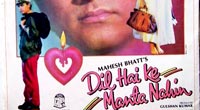
Race Full HD Movie Download

Mujrim Full HD Movie Download
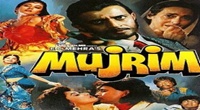
Bahu Begum Full HD Movie Download
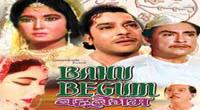
Jaise Ko Taisa Full HD Movie Download
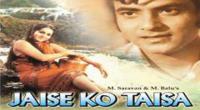
Himmat Full HD Movie Download
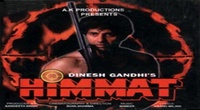
Aag(1994) Full HD Movie Download
.jpg)
Shaadi Se Pehle (2006) Full HD Movie Download
.jpg)
Cheluveye Ninne Nadalu Full HD Movie Download

Jackie Full HD Movie Download

Adbhutam Full HD Movie Download

Loaded Full HD Movie Download

A Time to Kill Full HD Movie Download
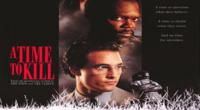
Gehri Chhot (1986) Full HD Movie Download
.jpg)
Aalaya Sikharam Full HD Movie Download
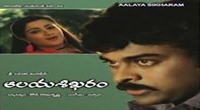
Devi Putrudu Full HD Movie Download
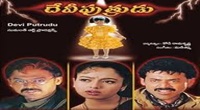
Sorry Naaku Pellaindi Full HD Movie Download
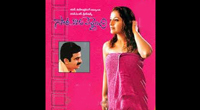
Gharana Bullodu Full HD Movie Download
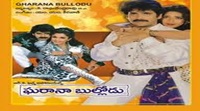
Salaam Namaste Full HD Movie Download

Darr - A Violent Love Story Full HD Movie Download
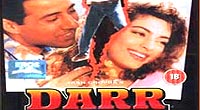
Tashan Full HD Movie Download
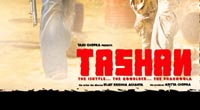
Download latest Movie from bollywood
- 1> baaghi 3
- 2> THE SKY IS PINK MOVIE FULL STORY AND REVIEW
- 3> Luka Chuppi
- 4> TO ALL THE BOYS I’VE LOVED BEFORE
- 5> Kabir Singh
- 6> Street Dancer 3D
- 7> Simmba
- 8> Gone Girl
- 9> The Girl Who Lived
- 10> Ludo
- 11> DILWALE DULHANIA LE JAYENGE
- 12> GUILTY
- 13> The Godfather
- 14> Adventures of Rusty
- 15> Sooryavanshi
- 16> Satyameva Jayate 2
- 17> Thappad
- 18> Bhool Bhulaiyaa 2
- 19> KGFChapter 2
- 20> Mardaani 2
- 21> Pinjar
- 22> Shivaji maharaj
- 23> Ek Villian 2
- 24> Hungama 2
- 25> Divergent
- 26> Mumbai Saga
- 27> The Internship
- 28> HIT (telugu)
- 29> Panga
- 30> The perfect date
- 31> 16 December
- 32> Gopala Gopala (Telugu)
- 33> Brahmastra
- 34> Gangubai Kathiawadi
- 35> Manmadhudu
- 36> Nenu local
- 37> Mahanati
- 38> Shatamanam bavathi
- 39> Lagaan
- 40> After
- 41> MOM
- 42> Shamshera
- 43> Raguvaran BTech
- 44> Khakee
- 45> The villain
- 46> OM
- 47> Mr. perfect
- 48> Bueatifull mind
- 49> Hichki
- 50> Gabbar Singh
- 51> Jogi
- 52> Before Sunrise
- 53> Before Sunset
- 54> Before Midnight
- 55> The Big Bull
- 56> Top Gun: Maverick
- 57> The Purge
- 58> The Sky is Pink
- 59> Laxmmi Bomb
- 60> Sadak 2
- 61> Sufna
- 62> Prithviraj
- 63> PK
- 64> Coolie No 1(2020)
- 65> Black Widow
- 66> Dear Zindagi
- 67> Dil Bechara
- 68> PHIR HERA PHERI
- 69> WAR
- 70> Dostana
- 71> RRR: Roudram Ranam Rudhiram
- 72> Maidan
- 73> Dabbang 3
- 74> Chhalaang
- 75> life as we know it
- 76> SherShaah
- 77> Sandeep Aur Pinky Faraar
- 78> Event Horizon
- 79> 83
- 80> Radhe: Your Most Wanted Bhai
- 81> Gunjan Saxena: The Kargil Girl
- 82> Mr India
- 83> Vivah
- 84> Anokha Bandhan
- 85> Ghost
- 86> Bhoot: Part One - The Haunted Ship
- 87> Haseen Dilruba
- 88> Laal Singh Chaddha
- 89> Qismat
- 90> Rajput
- 91> Drive
- 92> Dil Chahta Hai
- 93> Dil Ki Baazi
- 94> Dil Ka Rishta
- 95> Teesri Manzil
- 96> Dil
- 97> Love Aaj Kal
- 98> Khaali Peeli
- 99> Bunty Aur Babli 2
- 100> Atrangi Re
- 101> Gulabo Sitabo
- 102> Jodi
- 103> Suraj Pe Mangal Bhari
- 104> Deewana
- 105> Attack
- 106> Sardar Udham Singh
- 107> Toofan
- 108> THE LOVEBIRDS
- 109> Jersey
- 110> Ginny Weds Sunny
- 111> Thalaivi
- 112> Shiddat
- 113> Angels vs Zombies
- 114> Koi Mil Gya
- 115> Thank God
- 116> Bhuj: The Pride of India
- 117> Hum Aapke Hain Kaun
- 118> The Platform
- 119> Bird Box
- 120> Roohi Afzana
- 121> Torbaaz
- 122> Nikamma
- 123> World War Z
- 124> Extraction
- 125> Train to Busan
- 126> Life of Pi
- 127> SHAADI MEIN JROOR AANA
- 128> Himmat Aur Mehnat
- 129> To All The Boys: P.S. I Still Love You
- 130> Mimi
- 131> Good Newwz
- 132> Shubh Mangal Zyada Saavdhan
- 133> Raabta
- 134> Harry Potter and the Philosopher's Stone
- 135> Harry Potter and the Chamber of Secrets
- 136> Chhapaak
- 137> War of the Worlds
- 138> Harry Potter and the Prisoner of Azkaban
- 139> Harry Potter and the Goblet of Fire
- 140> MURDER MYSTERY
- 141> Shakuntala Devi
- 142> Bachchan Pandey
- 143> Jayeshbhai Jordar
- 144> Sheer Qorma
- 145> Saina
- 146> 'O' Pushpa I hate tears
- 147> Kedarnath
- 148> MS Dhoni The Untold Story
- 149> Chhichhore
- 150> Badhaai Ho
- 151> Unstoppable
- 152> Oz the Great And Powerful
- 153> The Girl on the Train
- 154> Haathi Mere Saathi 2020
- 155> The Conjuring: The Devil Made Me Do It
- 156> Gandhi Se Pehle Gandhi
- 157> The Song of Scorpions
- 158> Srimanthudu
- 159> Hello Guru Prema Kosame
- 160> Beauty and The Beast
- 161> Black Panther
- 162> Charlie and the Chocolate Factory
- 163> Bole Chudiyan
- 164> Fidaa
- 165> Duvvada Jagannadham
- 166> Bruce Lee: The Fighter
- 167> Hyper
- 168> Yaara
- 169> Red (2020)
- 170> Shivam
- 171> That Is Mahalakshmi
- 172> Nishabdham
- 173> Aashram 2020 web series
- 174> Laxmii
- 175> Mismatched
- 176> STUDENT OF THE YEAR 2
- 177> NAIL POLISH
- 178> Ramprasad Ki Tehrvi
- 179> KAAGAZ
- 180> 12 o Clock
- 181> The Power
- 182> bolo hau
- 183> Tribhanga
- 184> JAMUN
- 185> Madam Chief Minister
- 186> Maasaab
- 187> Aadhaar
- 188> Tanhaji
- 189> Bhaagi 3
- 190> Bhootnath
- 191> MALANG
- 192> Jai Mummy Di
- 193> Haathi Mere Saathi 2021
- 194> Shakeela
- 195> Unpaused
- 196> Annayya
- 197> Vamsoddharakudu
- 198> Mrugaraju
- 199> Narasimha Naidu
- 200> Sankranti
- 201> Manasu Maata Vinadhu
- 202> Anjaane
- 203> Apaharan
- 204> Bachke Rehna Re Baba
- 205> Bewafaa
- 206> Roohi
- 207> Radhe
- 208> Zindagi Khoobsoorat Hai
- 209> Yeh Mohabbat Hai
- 210> Yeh Kya Ho Raha Hai?
- 211> The Tomorrow War
- 212> DehradunDiary
- 213> Meri Shaadi Karaoo
- 214> Matruu Ki Bijlee Ka Mandola
- 215> No One Killed Jesica
- 216> Aag Ka Goola
- 217> Eight Million Dollars
- 218> Three Hundred
- 219> Cats and Dog
- 220> Decoy
- 221> Gold Rush
- 222> You Have Got Mail
- 223> Final Destination three
- 224> Tofan
- 225> Jungle
 Story of movie It%27s All True 1942 Film :
Story of movie It%27s All True 1942 Film : 